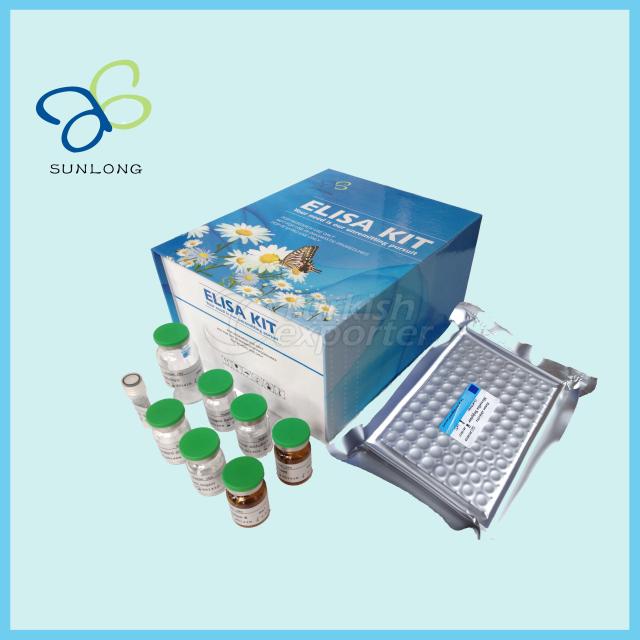Canine Kidney injury molecule 1 (Kim-1) ELISA Kit
Catalog No :
CAS Number :
Brand :
In Stock
Specifications:
| Application | ELISA-Based Assays |
| Storage Temperature | 2-8°C |
| Product Type | Elisa Kit |
| Product Grade | Molecular Biology |
The Canine Kidney Injury Molecule 1 (Kim-1) ELISA Kit is a highly sensitive and specific assay designed for the quantitative measurement of Kim-1 levels in canine serum, plasma, culture media, and other biological fluids. This kit utilizes a Sandwich-ELISA technique to ensure accurate and reproducible results, making it ideal for research into kidney function, injury, and related diseases in canines.
Purpose
- Quantification of Canine Kim-1:
- Measures the concentration of Kim-1 as a biomarker for kidney injury and function in canines.
- Applicable Samples:
- Canine serum, plasma, culture media, and other biological fluids.
Principle
The assay is based on the Sandwich-ELISA technique, which ensures high specificity and sensitivity for Kim-1 detection. The workflow includes:
- Pre-Coated Plate:
- Microelisa strip plate wells are pre-coated with an antibody specific to canine Kim-1.
- Sample and Standard Addition:
- Standards and samples are added to the wells, allowing Kim-1 in the sample to bind to the immobilized antibody.
- HRP-Conjugated Detection:
- A Horseradish Peroxidase (HRP)-conjugated antibody specific for Kim-1 is added, forming a sandwich complex.
- Washing Step:
- Unbound components are washed away, reducing background interference.
- TMB Substrate Reaction:
- TMB substrate is added, which reacts with the HRP enzyme, producing a blue color in positive wells.
- Stop Reaction:
- A stop solution is added, converting the color from blue to yellow.
- Optical Density Measurement:
- The optical density (OD) is measured at 450 nm using a spectrophotometer. The OD value is directly proportional to the Kim-1 concentration in the sample.
Features
- High Sensitivity and Specificity:
- Detects low levels of Kim-1 with minimal cross-reactivity.
- Quantitative Results:
- Generates a standard curve for accurate quantification of Kim-1 concentrations.
- Wide Sample Compatibility:
- Suitable for a variety of biological fluids, including serum, plasma, and culture media.
- Reproducibility:
- Consistent results across experiments due to stringent quality control.
- Ease of Use:
- Includes pre-coated plates and ready-to-use reagents for simplified assay setup.
Kit Components
- Pre-coated Microelisa strip plate.
- Standards for generating a standard curve.
- HRP-conjugated Kim-1 detection antibody.
- TMB substrate solution.
- Stop solution.
- Wash buffer.
- Sample diluent.
- Instruction manual.
Applications
- Renal Disease Research:
- Study the role of Kim-1 as a biomarker for acute and chronic kidney injury in canines.
- Veterinary Diagnostics:
- Monitor kidney health and diagnose renal disorders in dogs.
- Toxicology Studies:
- Assess nephrotoxicity in drug development or environmental exposures.
- Inflammation and Repair Studies:
- Investigate Kim-1's role in renal inflammation, damage, and repair mechanisms.
Advantages
- Accuracy:
- High specificity for Kim-1 ensures minimal interference and precise quantification.
- Convenience:
- Ready-to-use reagents simplify the workflow.
- Versatility:
- Can be used for various sample types and experimental designs.
- Reproducibility:
- Ensures reliable results across multiple tests.
Assay Protocol Summary
- Add standards or samples to the pre-coated wells.
- Incubate with HRP-conjugated Kim-1 antibody.
- Wash to remove unbound components.
- Add TMB substrate to develop color.
- Stop the reaction and measure OD at 450 nm.
- Calculate Kim-1 concentration using the standard curve.
Storage and Stability
- Store kit at 2–8°C for long-term stability.
- Avoid repeated freeze-thaw cycles of reagents to maintain quality.
The Canine Kidney Injury Molecule 1 (Kim-1) ELISA Kit provides a reliable and efficient method for measuring Kim-1 levels in canine biological samples. Its high sensitivity, specificity, and ease of use make it an invaluable tool for veterinary research, renal health monitoring, and toxicology studies.




 0
0
